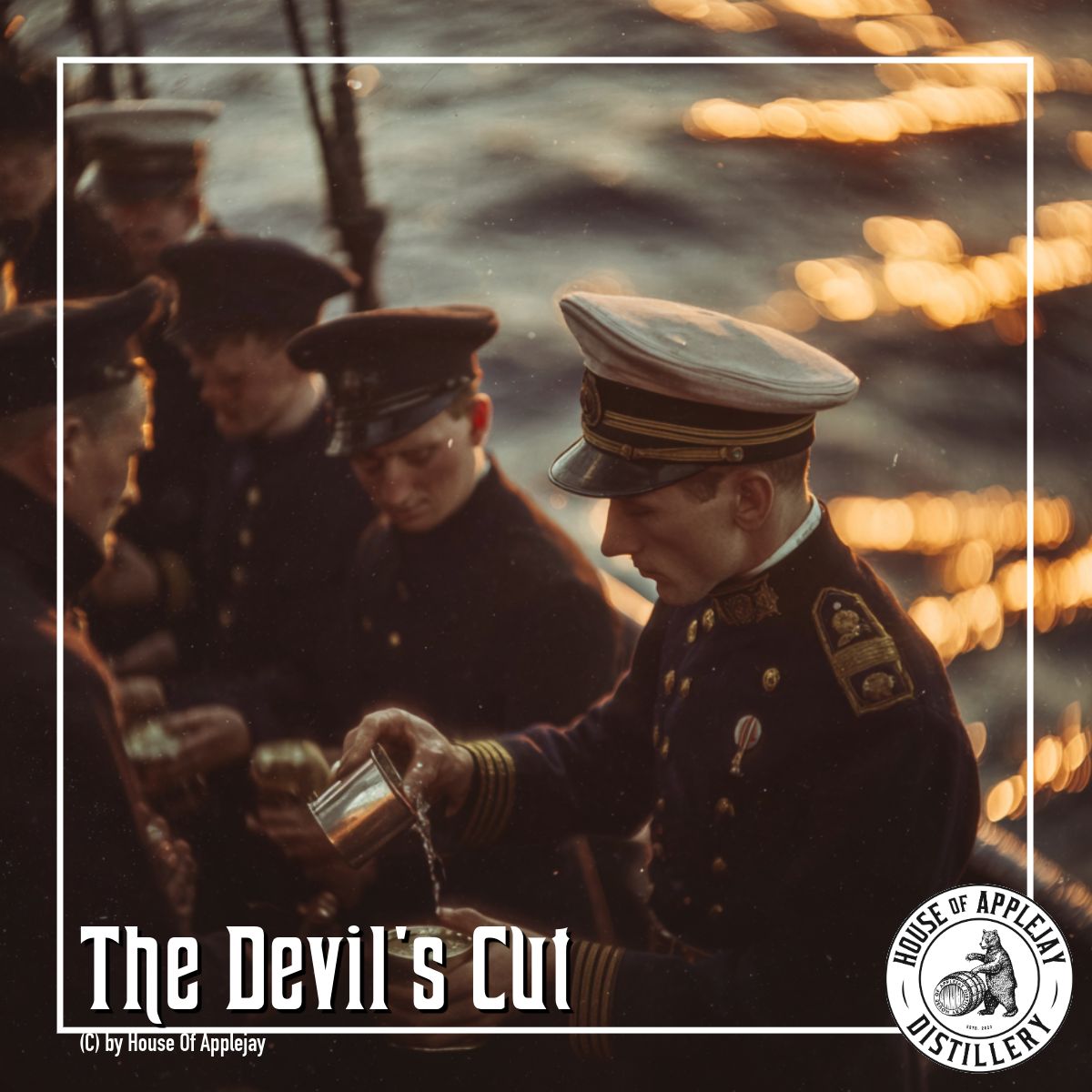The Devil’s Cut
Rum for the Dead: From Naval Ritual to Distiller’s Reckoning
For over 300 years, rum was more than just a daily ration aboard Royal Navy ships—it was tradition, camaraderie, and comfort at sea. In the face of war, shipwreck, and disease, sailors turned to ritual to make sense of life and loss. One of the most enduring among these was the silent practice of pouring a small measure of rum onto the deck before drinking—a gesture for those who had gone overboard, perished in battle, or simply never returned. It was a sailor’s offering to the dead and to the sea that held them.
Ritual Born at Sea
By the mid-17th century, rum had become a staple aboard British naval vessels. When the Royal Navy captured Jamaica in 1655, rum began replacing brandy in sailors’ rations. In 1740, Admiral Edward Vernon officially ordered it to be diluted with water and citrus, creating what became known as grog.
Sailors received this rum ration daily—up to half a pint in earlier years—and with it came tradition. Before taking their first sip, some would pour a small amount onto the deck. It was an act of remembrance and respect, done without ceremony but filled with meaning. Oral histories from the 18th and 19th centuries refer to it as “giving one to the sea” or “to absent friends.” The sea, after all, claimed many lives, and the gesture gave the living a moment to acknowledge the fallen.
Black Tot Day: The End of an Era
As naval technology advanced, the rum ration came under scrutiny. On 17 December 1969, the Admiralty Board issued a formal statement to Parliament in response to MP Christopher Mayhew. The message was clear:
“The Admiralty Board concludes that the rum issue is no longer compatible with the high standards of efficiency required now that the individual’s tasks in ships are concerned with complex, and often delicate, machinery and systems on the correct functioning of which people’s lives may depend.”
This led to the Great Rum Debate in the House of Commons on 28 January 1970, sparked by MP James Wellbeloved, who argued for the preservation of the tradition. After an hour and fifteen minutes, the debate concluded with a vote to end the daily tot.
On 31 July 1970, known forever after as Black Tot Day, the final rum ration was served. At six bells in the forenoon watch—11:00 a.m.—the order “Up Spirits” was piped one last time. Across the fleet, sailors marked the moment with quiet defiance and humor. At HMS Collingwood, a mock funeral took place, complete with black armbands, a coffin, drummers, and a piper. Tots were poured into the sea—symbolically “buried at sea”—and a final toast was raised to a vanishing tradition. The Portsmouth General Post Office even issued a special postmark: “Last Issue of Rum to the Royal Navy 31 July 1970.”
The ration was replaced with an extra can of beer—but the soul of the tradition was not so easily substituted.
The Devil’s Cut: A Name Applied Later
Although the act of offering rum to the sea has deep roots, the term “Devil’s Cut” was never used by sailors at the time. Instead, the phrase emerged more than 40 years after Black Tot Day, when Jim Beam trademarked and popularized it in 2011. In distilling, “the Devil’s Cut” refers to the portion of spirit trapped deep inside the wooden staves of a barrel—unlike the “angel’s share,” which evaporates into the air during aging.
To recover this hidden spirit, distillers use water or steam to extract the liquid, increasing production yields. It was a marketing innovation—but the choice of name was deliberate. Jim Beam’s campaign leaned on a darker, mythic tone, drawing from ghost stories, folklore, and maritime language. In doing so, it unintentionally echoed the Royal Navy’s final farewell: the idea that not all spirits are consumed, and some must be given back—to the sea, to the past, or to forces unseen.
So while “the Devil’s Cut” as a phrase didn’t originate aboard ships, its emotional resonance ties directly to the lost tot and the quiet ritual of pouring out a sailor’s share. What was once poured to honor the dead is now a name for what the barrel refuses to give up.
The Technical Devil’s Cut
Today, “the Devil’s Cut” is used widely in the spirits industry to describe the recovered spirit that remains locked in the oak. While it helps improve yield, not everyone agrees it should be bottled. Critics argue that what the wood holds back may lack balance or finesse—that the Devil’s Cut might best remain in the barrel, just as the sea keeps its dead.
In the end, whether it’s poured on deck or pulled from charred oak, there is always a part of the spirit that doesn’t belong to us. The Devil’s Cut is what we lose, what we give away, and what we cannot fully reclaim.
To the sea, to the past, and to the dead—cheers.
The Distilling Culture
BLOG
Embark on a global journey, and you’ll find that cultures possess tales that harken back to their ancient beginnings of distillation, brewing, and winemaking.
info@houseofapplejay.com
67 Fowler St, Bldg B, East Ellijay, GA 30540

